Mersin Metropolitan Municipality Mercan 100th Year Climate and Environment Science Center offers scientific and interactive experiences on climate change, environmental issues, and sustainable living with its Climate and Environment Workshop!
In this workshop, participants have the opportunity to observe the effects of climate change on our world, develop environmentally friendly solutions, and acquire sustainable living habits. The aim is to raise environmentally friendly individuals through experiments, hands-on studies, and creative projects.

In the Marine Life Workshop of Mercan 100th Year Climate and Environment Science Center, children learn about marine ecosystems and organisms. The workshop program allows little explorers to discover the marine world.
Seas are the largest and most complex ecosystems on our planet. These enormous bodies of water are home to thousands of different marine species. However, due to factors such as climate change, pollution, and overfishing, some marine species are in danger of extinction. As Mersin Metropolitan Municipality, we aim to increase awareness for the protection of these creatures by teaching about marine ecosystems and organisms through the Marine Life Workshop within the Mercan 100th Year Climate and Environment Science Center.

According to the IUCN Red List, it is critically endangered. Hunting, habitat loss, and marine pollution are among the biggest threats.
Their shells are in amber tones, decorated with brown, golden yellow, and black patterns. Unfortunately, these beautiful shells have led to them being commercially hunted throughout history.
They have wide and powerful flippers. With their particularly long front flippers, they can cover long distances in the open sea. Adult individuals are generally between 60-90 cm and can reach 45-70 kg in weight.
Its pointed and curved beak, similar to a hawk's beak, allows it to extract food like sponges from between hard corals. This beak is a distinctive feature that distinguishes it from other species.
Hawksbill turtles protect the health of coral reefs by eating sea sponges. Since sponges can damage corals, these turtles play a balancing role in the ecosystem.
Operating under the Mersin Metropolitan Municipality Climate Change and Zero Waste Department, the Mercan 100th Year Climate and Environment Science Center offers the Astronomy and Space Sciences Workshop for everyone interested in astronomy and space sciences!
In this workshop, participants experience a wonderful journey to explore the sky, learn about planets and stars, and travel to the depths of space with telescopes. They gain the opportunity to recognize the sky with astronomy software, understand the functioning of the universe, and make scientific observations.
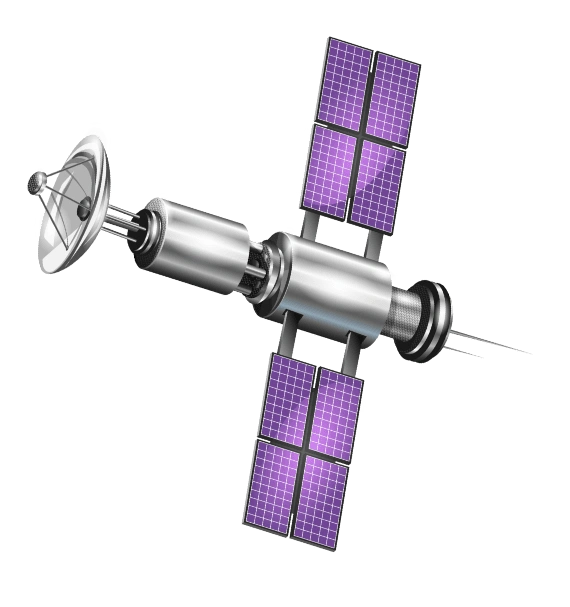
The main structure housing the satellite's core components. Power systems, computers, batteries, and control systems are located here. Thermal regulation systems are also present to protect against extreme temperature changes in space.
The satellite's primary energy source. They convert sunlight into electrical energy to power all systems. Panels are typically designed to orient toward the Sun for maximum efficiency.
Facilitates data and signal communication between the satellite and ground stations. It handles tasks such as telecommunications, television, internet, and GPS signals.
Used to determine the satellite's position and maintain its orbit. Systems like star trackers, Sun sensors, and gyroscopes ensure the satellite remains at the correct angle.
Ensures the satellite remains in the correct position in orbit. It can maneuver using small rocket engines or ion thrusters.
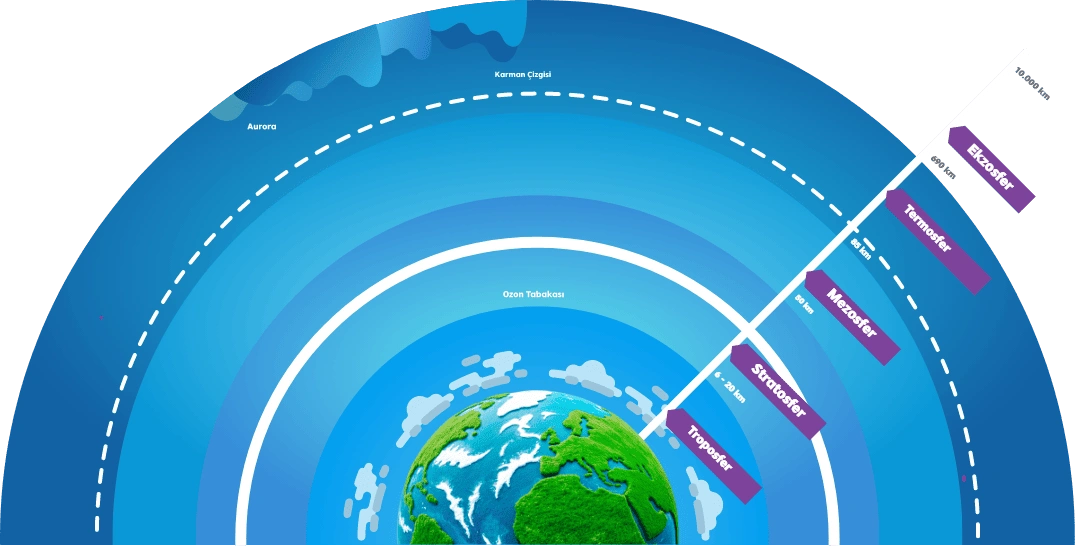










Polar lights, or auroras, are natural light displays seen in the skies of the North and South polar regions, resulting from the interaction of Earth's magnetic field with charged particles from the Sun.
A meteorite fall (also known as an observed fall) is a meteorite whose descent from outer space is observed by humans or automated devices and is subsequently collected. A meteorite is a solid piece of debris from an object such as a comet, asteroid, or meteoroid that survives its passage through a planet or moon's atmosphere to reach the surface. When the original object enters the atmosphere, factors like friction, pressure, and chemical interactions with atmospheric gases cause it to heat up and radiate energy. It then becomes a meteor, forming a fireball, also known as a shooting star. Astronomers call the brightest examples “bolides.” After reaching the surface, the meteor becomes a meteorite. Meteorites vary in size. According to geologists, a bolide is a meteorite large enough to create an impact crater.
Ultraviolet rays from the Sun cause oxygen molecules (O2) in the upper atmosphere to break apart, resulting in the formation of free oxygen atoms. These oxygen atoms react with oxygen molecules (O2) to form ozone (O3) molecules. Ozone, also a greenhouse gas, forms naturally in the stratosphere layer of the atmosphere. The ozone layer prevents harmful UVB rays from reaching Earth. Human activities release chlorine and chlorofluorocarbons (CFCs) into the atmosphere, which react with ozone, causing its depletion. This reduction in stratospheric ozone is called ozone depletion. CFCs are emitted into the atmosphere through deodorants, air conditioners, refrigerators, car exhausts, and greenhouse gases. Ozone depletion increases the amount of ultraviolet light reaching Earth, with one major consequence being an increased incidence of certain types of cancer in humans. To protect the ozone layer, you can walk or bike to nearby places, use public transportation more often, avoid using sprays containing CFCs or HCFCs, and use cleaning products free of chlorine and bromine.
The troposphere is the closest layer to Earth's surface. “Tropos” means change, and this layer gets its name from the constantly changing weather conditions and gas mixing in this part of our atmosphere. About 75-80% of the atmosphere is in the troposphere. The troposphere ranges from 6 to 16 kilometers thick, depending on where you are on Earth, and is thinnest at the North and South Poles. This layer contains the air we breathe and the clouds in the sky. The air is densest in this lowest layer. In fact, the troposphere contains three-quarters of the atmosphere's mass. The air here is 78% nitrogen and 21% oxygen, with the remaining 1% consisting of argon, water vapor, and carbon dioxide. When you feel the wind on your face, see clouds in the sky, or watch birds flapping their wings in flight, you are experiencing the troposphere.
The stratosphere lies above the troposphere and below the mesosphere. “Strat” means layer, and this layer of our atmosphere has its own sublayers. There are no storms or turbulence here to mix the air, so cold, heavy air is at the bottom, and warm, light air is at the top. This is the opposite of how layers work in the troposphere, where we live. If you were to climb a mountain in the stratosphere, you would need to remove your warm clothing as you approached the top, unlike in the troposphere. This layer is 35 kilometers thick. The stratosphere is home to the critical ozone layer, which helps protect us from the Sun's ultraviolet (UV) rays by absorbing most of them. Life would not be possible without this protective layer.
The mesosphere lies between the thermosphere and the stratosphere. “Meso” means middle, and this is the highest layer where all gases mix. The mesosphere is 35 kilometers thick. The air is thin, so you cannot breathe in the mesosphere, but it contains more gas than the thermosphere. Have you ever seen a meteor shower where meteoroids burn up, leaving trails? Some people mistake these for shooting stars, but that is not true. Meteors entering our atmosphere burn up in the mesosphere. Since the exosphere and thermosphere have little air, meteors pass through them without much issue. However, when they hit the mesosphere, there is enough gas to cause friction and heat.
The thermosphere lies between the exosphere and the mesosphere. “Thermo” means heat, and the temperature in this layer can reach up to 2000°C. However, you would feel very cold in the thermosphere because it lacks enough gas molecules to transfer heat to you. This also means there are not enough molecules for sound waves to travel. This layer of Earth's atmosphere is about 513 kilometers thick, much thicker than the inner layers but not as thick as the exosphere. The thermosphere is home to the International Space Station orbiting Earth. It is also where you find low Earth orbit satellites.
The exosphere is the outermost layer of our atmosphere. “Exo” means outer, and the exosphere is the edge of our atmosphere, separating the rest of the atmosphere from outer space. It is about 10,000 kilometers thick, almost as wide as Earth itself. This means you need to be far from Earth to reach outer space. The exosphere contains gases like hydrogen and helium, but they are very spread out with a lot of empty space. There is no air to breathe, and it is very cold.
Mersin Metropolitan Municipality Mercan 100th Year Climate and Environment Science Center invites students on a journey of discovery and learning with the Science Workshop, fostering scientific curiosity!
In this workshop, participants gain experience by learning the fundamental principles of science through laboratory work and interactive activities. Basic scientific process skills such as observation, data collection, experiment design, and result interpretation are developed.
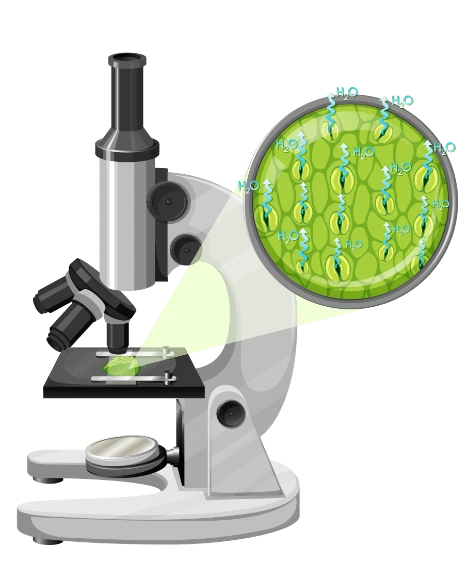
The part that magnifies the microscopic image received through other lenses for the eye to see. It is the topmost lens used in our system for sharpening and magnifying the image.
The movement range of most objective lenses varies roughly from 0.17 mm to 170 microns. This knob is used for coarse focusing or before switching to fine focusing, allowing the sample to be viewed more clearly.
The objective lens of a microscope is the primary optical component that forms the initial image of the sample being examined. Typically attached to the microscope body, these lenses consist of a series of lenses with different magnification and resolution powers.
An important platform where the sample is placed and can be moved during examination. This stage can move forward, backward, and sideways, allowing the sample to be shifted in various directions to examine different areas. It includes fixtures and positioning devices to hold the sample.
Provides the necessary light for the sample to be visible under the microscope. Located at the bottom, the light source illuminates the sample, enabling a clear image to form.
Provides precise focusing. Used after coarse focusing to fully sharpen the image. Allows for very fine adjustments.
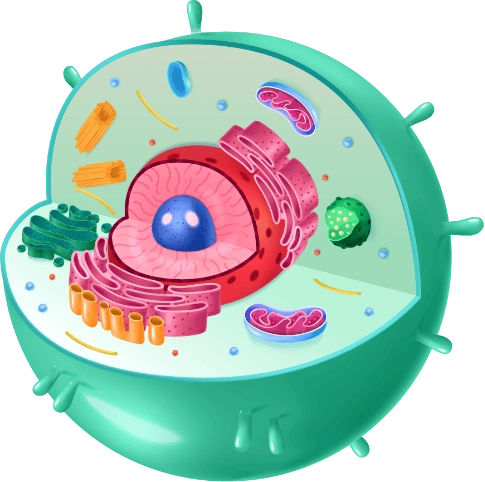

Found in all eukaryotic cells, the endoplasmic reticulum is a network of membranes. It is crucial for processes like lipid and carbohydrate metabolism and protein production. The ER is an organelle where proteins and lipids are produced, processed, and transported within the cell. It functions like an intracellular “highway.” In liver cells, the smooth ER helps break down alcohol, drugs, and toxins.

The Golgi apparatus, located within the cell, is not connected to the cell nucleus. A group of membranes, the Golgi is an organelle found in eukaryotic cells that plays a role in processing, packaging, and transporting proteins. Positioned near the cell membrane, it consists of flattened membrane sacs (cisternae). It receives proteins and lipids from the endoplasmic reticulum, modifies them, and makes them functional.

Centrosomes, involved in flagella, cilia, and cell division, consist of two main centrioles. During cell division, nuclear membranes break down, microtubules interact with cell chromosomes, and centrosomes prepare them for cell division. Plant cells lack centrosomes; instead, spindle fibers are organized from different structures in the cytoplasm.

Mitochondria are organelles found in eukaryotic cells that produce ATP (adenosine triphosphate), providing energy to the cell. They have a double-membrane structure with folds called cristae in the inner membrane. Mitochondria generate energy from glucose and fatty acids, supplying it to the cell in the form of ATP through a process known as cellular respiration. Mitochondrial DNA is passed only from mother to offspring, meaning we inherit all our mitochondria from our mothers. It is believed that mitochondria evolved from a bacterium (alpha-proteobacteria) that entered a cell and formed a symbiotic relationship about 1.5 billion years ago. This is known as the Endosymbiotic Theory.

Ribosomes are organelles responsible for protein synthesis within the cell. They are found in both prokaryotic (bacteria and archaea) and eukaryotic (plant, animal, fungi) cells. Ribosomes act like cellular factories, producing proteins. They are the only organelles not surrounded by a membrane, so they can be found both free in the cytoplasm and attached to the endoplasmic reticulum. All living cells have ribosomes, demonstrating their essential role in life. Ribosomes are so small they can only be seen with an electron microscope. Rapidly growing and highly active cells, like those in the liver, contain millions of ribosomes. Ribosomes cannot replicate on their own like DNA. The cell produces new ribosomes as needed. Scientists believe ribosomes have existed since the earliest forms of life on Earth.

Nutrient vacuoles aid in digestion, while contractile vacuoles regulate water balance. Vacuoles are numerous but small in animal cells and few but large in plant cells. A vacuole is a membrane-bound, fluid-filled organelle tasked with storing water, nutrients, waste materials, and ions within the cell. Waste materials are accumulated in vacuoles and removed from the cell. Pigments (color-giving substances) in plant leaves and flowers are stored in vacuoles. Additionally, some plants store toxic substances in vacuoles as a defense mechanism against animals.

Microtubules serve as “railways” for motor-driven intracellular transport. They interact with accessory proteins to form larger structures like the mitotic spindle and provide an organizational framework for the rest of the cell. The key to these functions is the “dynamic” nature of microtubules. Microtubules are cylindrical, hollow structures made of tubulin proteins, serving as the cell’s skeleton and transport system. They play critical roles in maintaining cell shape, organelle movement, and cell division. Microtubules are formed by the combination of alpha (α) and beta (β) tubulin proteins.

The cell membrane, or plasma membrane, is a selectively permeable layer on the cell’s exterior that allows molecules to enter or exit based on their properties. It consists of a phospholipid bilayer containing proteins, cholesterol, and carbohydrates. The primary function of the cell membrane is to protect the cell and regulate material exchange. The cell membrane is not entirely rigid but has a fluid structure, with proteins and lipids moving within it. The carbohydrate structures on the cell membrane are unique to each organism, like a fingerprint, enabling the immune system to recognize cells. Some viruses, such as influenza, HIV, and COVID-19, enter cells by binding to receptors on the cell membrane.

Found in animal and plant cells, the nucleus consists of chromatin, a nucleolus, and a nuclear envelope. The cell nucleus controls all cellular activities and is often described as the cell’s “brain.” It is where DNA is stored, replicated, and managed. The largest organelle in eukaryotic cells, it controls cell growth, development, and division. The nuclear envelope, a double-layered membrane, protects the nucleus and regulates material exchange. The nucleus contains chromatin, complexes of DNA and proteins that form chromosomes during cell division. The nucleolus within the nucleus produces the cell’s ribosomes. The nucleus is found in plant, animal, fungal, and protist cells, but not in prokaryotes like bacteria and archaea. Human cell DNA is about 2 meters long but tightly packed into the nucleus. A cell without a nucleus cannot regenerate and dies quickly.

Lysosomes are the units where cellular waste is disposed of. These small organelles contain enzymes that enable the digestion of carbohydrates, lipids, and proteins. A lysosome is a membrane-bound organelle containing hydrolytic enzymes responsible for intracellular digestion. It breaks down and recycles cellular waste, harmful substances, and aging organelles. Lysosomes digest dead cell fragments, foreign materials, and dysfunctional organelles, keeping the cell clean. Their internal pH is around 4.5-5, highly acidic, which allows enzymes to function properly. The cell digests old or damaged organelles through lysosomes in a process called autophagy. Plant cells use vacuoles and enzyme-containing organelles to perform lysosomal functions.
Mersin Metropolitan Municipality Mercan 100th Year Climate and Environment Science Center trains future technology leaders with its Robotics and Coding Workshop!
In this workshop, students develop analytical thinking, problem-solving, and engineering skills while also enhancing their creativity by designing and coding their own robots. An interactive learning environment is provided, combining science and technology through applications such as 3D design, Arduino programming, and robotic coding.

Nano robots, 25 times smaller than a human hair (approximately 1 micrometer in size), have been developed. These robots can deliver drugs to tumors in the body and be used in surgical procedures.
Exoskeletons like the Sarcos Guardian XO can increase a user’s lifting capacity by 20 times. A worker can feel a 90 kg load as only 4.5 kg.
The electronic skin (e-skin) developed at Stanford is 1000 times more sensitive than human skin. The flexible skin developed by the University of Tokyo can simultaneously detect temperature, pressure, and humidity.
PARO therapeutic robot seals used in Japanese nursing homes have been documented to reduce elderly stress levels by 73%. Hanson Robotics’ Sophia became the first robot to receive Saudi Arabian citizenship in 2017.
In car factories, robots can assemble a car five times faster than humans. Robots like FANUC and ABB can work 24/7 and never get tired!
The number of industrial robots worldwide exceeded 3.5 million as of 2023. The surgical robot market is expected to reach $35 billion by 2030.
Mersin Metropolitan Municipality Mercan 100th Year Climate and Environment Science Center offers a special program with the Little Inventors Workshop, supporting the scientific curiosity of children aged 4-6, fostering environmental awareness, and providing fun learning experiences!
In this workshop, young children gain awareness about climate change, sustainable living, and love for nature while exploring science through fun experiments and activities. Designed with a game-based learning model, the workshop allows children to have fun while adopting eco-friendly habits.
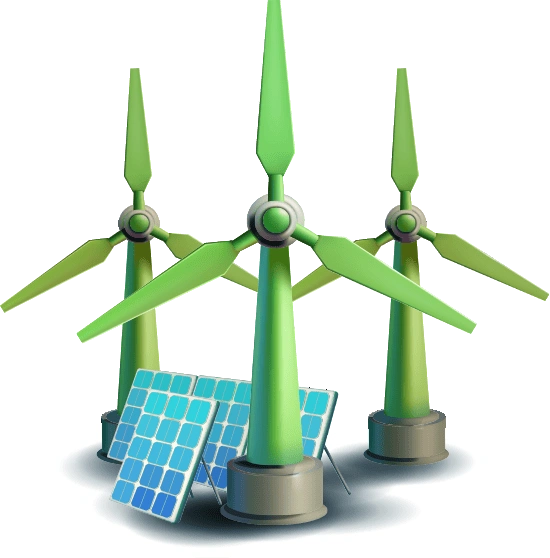
The sturdy support structure, usually made of concrete and steel, located under the turbine.
Function: Prevents the turbine from toppling in strong winds and reduces vibrations to ensure stable operation.
Large propeller-shaped components that capture the wind’s energy.
Function: Rotate based on the wind’s speed and direction to power the turbine. Their aerodynamic design ensures maximum energy conversion.
A system of photovoltaic cells that convert sunlight into electrical energy.
Function: Generates electricity using solar energy. When used with wind turbines, it can create a hybrid system for uninterrupted energy supply.
The rotating mechanism at the front of the wind turbine, consisting of blades and a rotor hub.
Function: Converts the kinetic energy of the wind hitting the blades into mechanical rotational motion.
The tall vertical structure that provides the turbine’s height and carries all mechanical and electrical components.
Function: Elevates the turbine to capture stronger and more stable wind currents. It also supports the nacelle (containing the generator, gearbox, etc.) and the rotor system.

Frequently Asked
Questions
Have questions? We are here to help you.
We use cookies on our website to provide you with better service. By clicking the "Accept All Cookies" button, you consent to cookie usage. You can reject all cookies except those that are absolutely necessary by clicking on the "Reject All Cookies" option. To partially disable cookies, press the "Manage Cookies" button. For detailed information about our cookies and personal data processing, you can access our Cookie Policy.
These cookies are necessary for the proper and secure functioning of our website, allowing users to navigate on our site and benefit from the services provided. These types of cookies are essential for the operation of our website and cannot be disabled by users.
Analytics cookies are cookies that collect information about site usage and enable statistical measurement of user behavior. In this way, statistical data can be collected from users to understand the general trend on the site.
Functionality and preference cookies are used to collect information about users' preferences, customize the site for users, provide functionality, and remember personalization and preferences.
Your personal data collected through advertising/targeting cookies is processed to show you relevant advertisements and carry out marketing activities. These cookies are used to identify users' browsers and devices to create profiles of their interests.